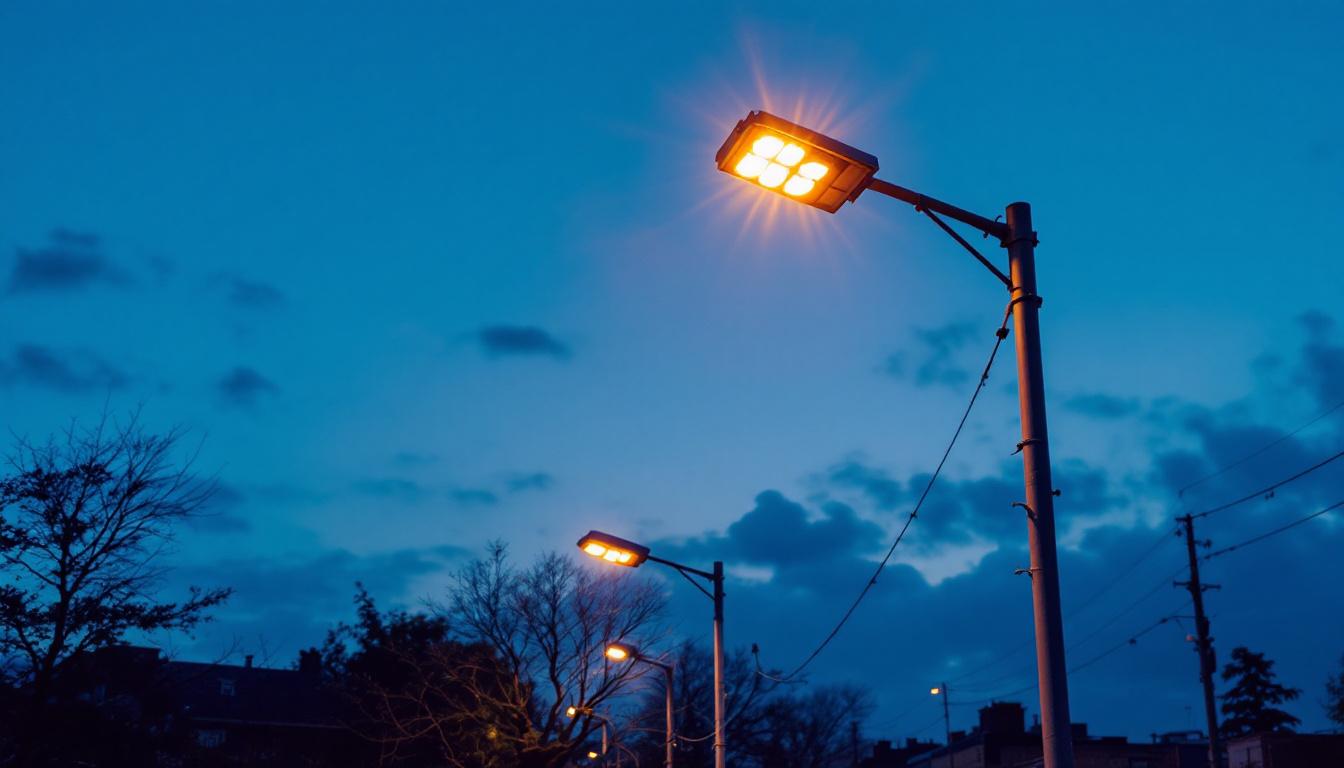
As the demand for outdoor living spaces continues to rise, the installation of outdoor patio light strands has become a popular choice for homeowners looking to enhance their outdoor experience. However, lighting contractors must navigate a complex landscape of compliance regulations and safety standards when working with these installations. Understanding these requirements is essential for ensuring both the safety of the installation and the satisfaction of the client.
Compliance regulations for outdoor lighting can vary significantly depending on the location and the specific type of installation. Local codes, national standards, and manufacturer guidelines all play a crucial role in determining what is permissible. Lighting contractors need to be well-versed in these regulations to avoid potential legal issues and ensure the safety of their installations.
Before beginning any installation, it is vital to consult local building codes and ordinances. These regulations often dictate the types of fixtures that can be used, the maximum wattage allowed, and even the placement of outdoor lighting. For example, some municipalities have restrictions on light pollution and glare, which can affect how and where light strands can be installed.
Contractors should also be aware of any zoning laws that might impact outdoor lighting installations. In residential areas, there may be specific guidelines regarding the brightness of lights and their proximity to property lines. Understanding these local codes can prevent costly modifications or even the need to remove non-compliant installations after they have been completed. Moreover, many communities are increasingly focused on sustainability, leading to the adoption of regulations that encourage energy-efficient lighting solutions. This shift not only benefits the environment but can also result in cost savings for homeowners in the long run.
In addition to local codes, national standards set forth by organizations such as the National Electrical Code (NEC) provide guidelines for electrical installations, including outdoor lighting. The NEC outlines safety requirements for wiring, grounding, and circuit protection, which are crucial for preventing electrical hazards.
Contractors must ensure that all outdoor lighting installations comply with these national standards. This includes using weather-resistant fixtures and materials, properly sealing connections, and ensuring that all wiring is rated for outdoor use. Failure to adhere to these standards can lead to electrical failures, increased maintenance costs, and potential liability issues. Furthermore, staying updated with the latest revisions to these standards is essential, as they can evolve to incorporate new technologies and safety practices. For instance, the growing popularity of LED lighting has prompted updates to guidelines regarding energy consumption and thermal management, making it imperative for contractors to remain informed about best practices in the industry.
The selection of appropriate lighting fixtures is a critical aspect of outdoor patio light strand installations. Not only do the fixtures need to meet compliance standards, but they also must align with the aesthetic preferences of the homeowner while providing adequate illumination.
There are various types of outdoor lighting fixtures available, each with its own set of benefits and considerations. String lights, for instance, are a popular choice for patios due to their versatility and decorative appeal. They can be hung overhead, wrapped around trees, or draped along railings to create a warm and inviting atmosphere.
Other options include wall-mounted sconces, pendant lights, and ground-mounted fixtures. Each type of fixture serves a different purpose and can contribute to the overall ambiance of the outdoor space. When selecting fixtures, contractors should consider factors such as brightness, energy efficiency, and the specific lighting needs of the area. For example, wall-mounted sconces can provide focused lighting for dining areas, while ground-mounted fixtures can enhance pathways and highlight landscaping features, ensuring safety and visual interest.
In today’s environmentally conscious market, energy efficiency is more important than ever. Lighting contractors should prioritize the use of LED fixtures, which consume significantly less energy than traditional incandescent bulbs. Not only do LEDs provide long-lasting performance, but they also reduce the overall energy consumption of outdoor lighting systems.
In addition to choosing energy-efficient fixtures, contractors can also explore solar-powered lighting options. These fixtures harness solar energy to illuminate outdoor spaces, reducing reliance on the electrical grid and minimizing energy costs for homeowners. Understanding the benefits and limitations of various lighting technologies can help contractors make informed recommendations to their clients. Furthermore, integrating smart lighting systems can enhance energy efficiency even further. These systems allow homeowners to control their outdoor lighting remotely, set schedules, and even adjust brightness levels based on the time of day, ensuring that energy is used only when necessary. This modern approach not only supports sustainability but also adds a layer of convenience and security to outdoor living spaces.
Proper installation is key to ensuring the longevity and safety of outdoor patio light strands. Lighting contractors must adhere to best practices throughout the installation process to avoid common pitfalls and ensure compliance with relevant regulations.
Before installation begins, contractors should take the time to plan the layout of the lighting system. This involves assessing the outdoor space, determining the desired lighting effects, and identifying the best locations for fixtures. A well-planned layout can enhance the overall aesthetic of the patio while ensuring adequate illumination for safety and functionality.
During the planning phase, it is also crucial to consider the electrical requirements of the installation. Contractors should calculate the total wattage of all fixtures to ensure that the circuit can handle the load. This step is essential for preventing overloads and potential electrical hazards. Furthermore, it is advisable to create a schematic diagram that outlines the placement of each fixture and the corresponding wiring. This visual guide can serve as a reference during installation, ensuring that no steps are overlooked and that the final setup matches the intended design.
Safety should always be a top priority during the installation of outdoor lighting. Contractors must follow all safety protocols, including wearing appropriate personal protective equipment (PPE) and ensuring that all electrical connections are secure and weatherproof. Additionally, using GFCI (Ground Fault Circuit Interrupter) outlets is essential for preventing electrical shock in outdoor settings.
Contractors should also be mindful of potential hazards, such as existing underground utilities. Before digging for post installations or running electrical lines, it is crucial to contact local utility companies to mark the locations of any underground services. This step can prevent accidents and costly damage to utility lines. Moreover, it is important to consider environmental factors such as weather conditions during installation. Rain or strong winds can pose additional risks, making it necessary to postpone work until conditions improve. By taking these precautions, contractors can ensure a safer working environment and a more successful installation process.
Once the outdoor patio light strands have been installed, ongoing maintenance is necessary to ensure their continued performance and safety. Lighting contractors should educate homeowners about the importance of regular maintenance and provide guidance on troubleshooting common issues.
Regular inspections of outdoor lighting systems can help identify potential problems before they escalate. Homeowners should be encouraged to check for any signs of wear and tear, such as frayed wires, loose connections, or damaged fixtures. Addressing these issues promptly can prevent more significant problems down the line.
Additionally, contractors should recommend periodic cleaning of fixtures to remove dirt, debris, and moisture that can affect performance. A simple cleaning routine can significantly extend the lifespan of outdoor lighting systems and maintain their aesthetic appeal. Homeowners can use a soft cloth and mild soap solution to wipe down fixtures, ensuring that they are not only functional but also visually pleasing. Furthermore, inspecting the surrounding landscape for overgrown plants or vegetation that may obstruct light can enhance the overall effectiveness of the lighting system.
Even with proper installation and maintenance, issues may arise with outdoor lighting systems. Common problems include flickering lights, inconsistent brightness, or complete outages. Contractors should be prepared to troubleshoot these issues and provide homeowners with clear instructions on how to address them.
For example, flickering lights may indicate a loose connection or a faulty bulb. In contrast, inconsistent brightness could be a sign of voltage fluctuations or issues with the transformer. Educating homeowners on these common issues can empower them to take proactive measures and seek professional assistance when necessary. Additionally, homeowners should be informed about the importance of using compatible bulbs and fixtures, as mismatched components can lead to further complications. Keeping a log of any issues and repairs can also help track the performance of the lighting system over time, making it easier to identify patterns and recurring problems that may need professional attention.
As outdoor patio light strands become increasingly popular, lighting contractors must stay informed about compliance regulations, best practices, and maintenance strategies. By understanding the complexities of outdoor lighting installations, contractors can provide safe, efficient, and aesthetically pleasing solutions for their clients.
From navigating local codes and selecting the right fixtures to ensuring proper installation and ongoing maintenance, every aspect of the process is crucial for delivering high-quality outdoor lighting solutions. By prioritizing compliance and safety, lighting contractors can enhance their reputation and build lasting relationships with their clients.
Ultimately, the goal is to create outdoor spaces that are not only beautiful but also functional and safe. With the right knowledge and approach, lighting contractors can excel in the growing market of outdoor patio lighting, meeting the needs of homeowners while adhering to all necessary regulations.
Ready to elevate your outdoor patio lighting projects with the best in compliance and quality? Look no further than LumenWholesale, where we provide lighting contractors with spec-grade lighting products at unbeatable wholesale prices. Our extensive selection not only meets but exceeds industry standards, ensuring your installations shine with reliability and performance. Plus, with free shipping on bulk orders, you can trust that you’re getting premium lighting solutions at the best value, without any hidden fees. Don’t compromise on quality or cost. Explore our wholesale lighting options today and bring unparalleled excellence to your outdoor lighting endeavors.

Discover the essential best practices for installing and maintaining LED high bay UFO lights in this comprehensive guide tailored for lighting contractors.

Discover how Rab Lights can transform your business with our comprehensive guide tailored for lighting contractors.

Discover the science behind electric light posts and how understanding their design benefits lighting contractors.

Explore the advantages and drawbacks of Type G lamps for lighting contractors.